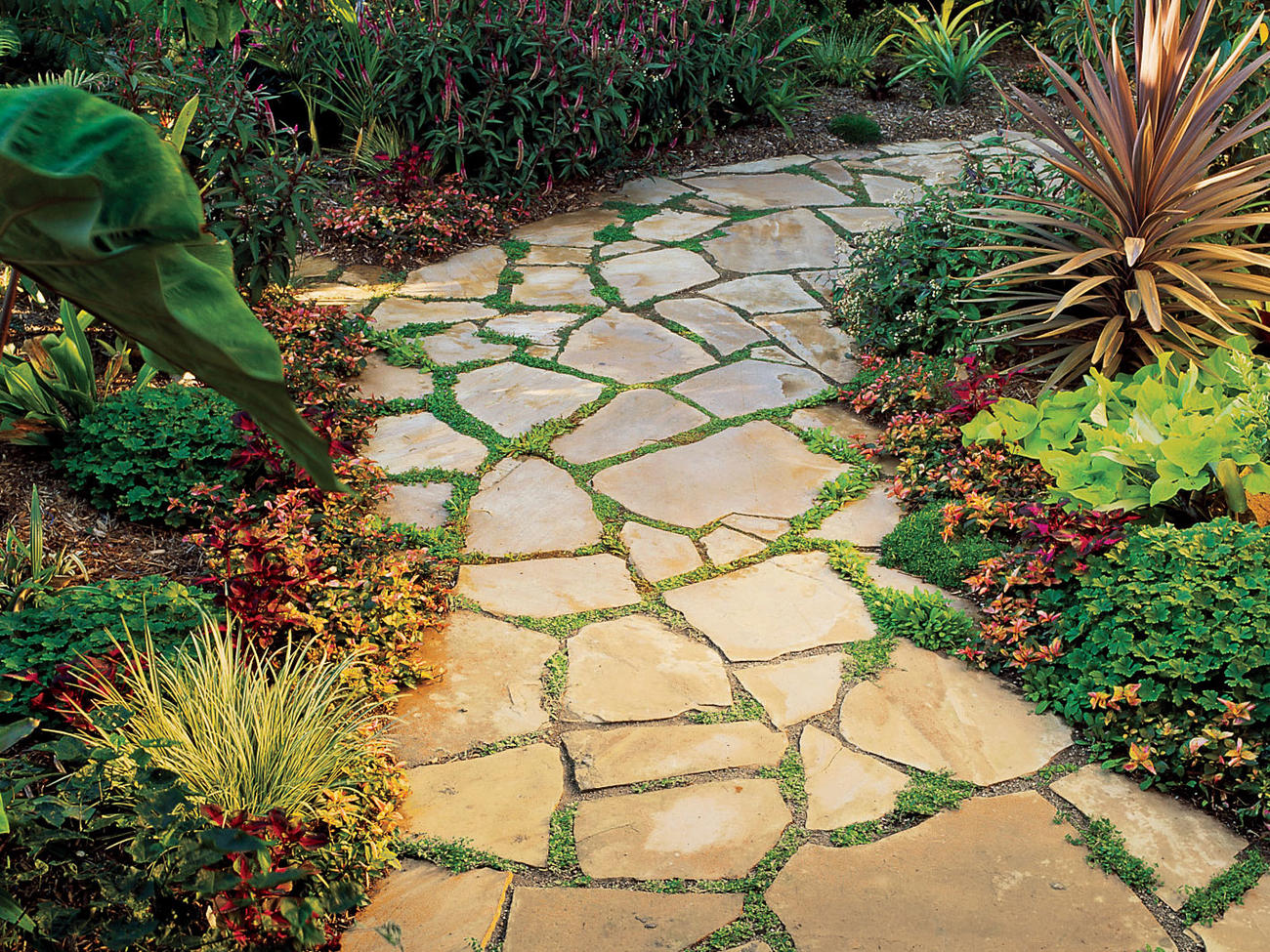
How to Lay a Flagstone Path

Steven Gunther
Even for a novice do-it-yourselfer, installing a mortarless flagstone path is a practically foolproof project. “It’s not very technical and doesn’t require any power tools,” says Tom Piergrossi, nursery owner, garden designer, and host of Down to Earth, a gardening show produced by San Diego County Television Network. “It’s mostly labor, but there’s enough artistry involved to make the task satisfying.”
Piergrossi and his crew built the path at the home of Rich and Holly Mayes in Escondido, California. It replaced a narrow concrete sidewalk that led straight to the front door. The new path is wider and takes a few curves, forming generous planting pockets along the way.
There’s just enough space between the stones for strips of groundcover to grow. Piergrossi used Mazus reptans, a Himalayan native. Other candidates include baby’s tears, dwarf thyme, and Irish moss.
DESIGN: Tom Piergrossi Landscape and Nursery, Vista, CA (760/598-4882)
Tools
• Spade
• Rake
• Hand tamper (available at rental yards)
• Two stakes, string, line level
• One or two 2-by-4s, at least 6 ft. long, to use as leveling guides
• Stone or brick chisel
• Safety goggles
Materials
• Gypsum or flour
• Decomposed granite (sold by the cubic yd.; 1 cubic yd., about $24, covers 160 square ft. to a depth of 2 in.)
• Compost
• Flagstone of regular thickness, about 1 ½ to 2 ½ in. thick (slabs are sold by weight; 1 ton, about $320, covers 100 to 120 square ft.)
• Groundcover (sold in nursery cell-packs or mud flats)
